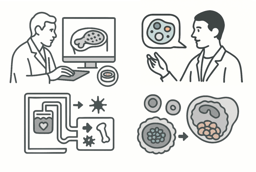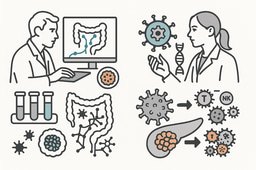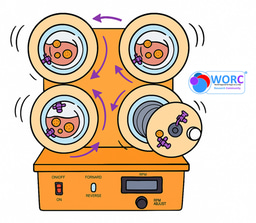Acoustic Levitation: Building 3D Cell Structures Without Touching a Surface

Acoustic levitation is emerging as a powerful tool in bio-fabrication. By using precisely tuned sound waves, cells can be suspended in mid-liquid, pulled into pressure nodes, and encouraged to self-assemble into 3D structures, all without any plastic surfaces or scaffolds.
Here you can see a time-lapse view of how cells rapidly self-assemble into a 3D spheroid when held in an acoustic levitation field:

Image adapted from “Self-organization and culture of Mesenchymal Stem Cell spheroids in acoustic levitation” (DOI: 10.1038/s41598-021-87459-6).
Why It’s Exciting?
- Truly scaffold-free 3D assembly: Acoustic fields pull cells together in mid-fluid, allowing them to self-assemble based purely on cell–cell interactions. No Matrigel, no microcarriers, no plastic wells influencing behaviour, just biology forming itself.
- Fast and highly uniform spheroids: Many studies report spheroid formation within hours, not days. Because the acoustic field distributes cells evenly into defined nodes, aggregate size and shape are far more consistent, which is essential for organoids, drug screening, and manufacturing (https://doi.org/10.1038/s41598-021-87459-6).
- Enhanced cell function and maturation: Levitated spheroids, such as hepatic or stem-cell–derived aggregates, show improved polarity markers, stronger tissue-specific gene expression, higher secretion of functional proteins (e.g., albumin), and reduced stress from surface attachment. This suggests levitation may promote more in vivo-like organisation (https://doi.org/10.1038/s41598-024-72059-x).
- Minimal plastic use and reduced waste: Since cells never touch the dish, entire workflows can be run with dramatically fewer disposables (https://doi.org/10.1002/bit.28651). This reduces cost, contamination risks, and environmental impact, an appealing feature for future GMP workflows.
- Compatible with automation and parallelisation: Acoustic chips can contain arrays of levitation nodes, enabling many spheroids to form simultaneously. Some designs integrate perfusion and real-time imaging, making them suitable for automated platforms and high-content systems.
- Gentle but precise control: Acoustic forces are strong enough to aggregate cells, yet gentle enough to maintain >90–95% viability. They can also be tuned to move, merge, or position spheroids with millimetre-scale precision, something nearly impossible with traditional plates (https://doi.org/10.1039/D5LC00153F).
Where It’s Going?
Acoustic levitation platforms are moving beyond proof-of-concept. New devices allow long-term culture, parallel processing, and even precise positioning of 3D tissues for imaging or histology. If refined, levitation could become part of automated biomanufacturing workflows, producing functional spheroids or organoid precursors without touching a single well plate.
Here you can find some interesting publications about the acoustic levitation technology:
- “Improved functionality of hepatic spheroids cultured in acoustic levitation compared to existing 2D and 3D models”; DOI: https://doi.org/10.1038/s41598-024-72059-x
- “Immune Cells Infiltration of Patient Derived Glioblastoma Cells spheroids in Acoustic Levitation in Bulk Acoustic Wave devices”; DOI: https://doi.org/10.1101/2025.02.28.640539
- “Subaqueous 3D stem cell spheroid levitation culture using anti-gravity bioreactor based on sound wave superposition”; DOI: https://doi.org/10.1186/s40824-023-00383-w
- “Self-organization and culture of Mesenchymal Stem Cell spheroids in acoustic levitation”; DOI: https://doi.org/10.1038/s41598-021-87459-6
- “Acoustic levitation as a tool for cell-driven self-organization of human cell spheroids during long-term 3D culture”; DOI: https://doi.org/10.1002/bit.28651
- “An acoustic levitation platform for high-content histological analysis of 3D tissue culture”; DOI: https://doi.org/10.1039/D5LC00153F





Please sign in or register for FREE
If you are a registered user on WORC.Community, please sign in